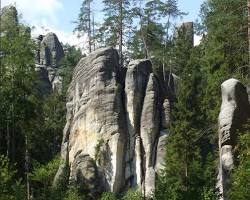providencemarianwood.org – Table Mountains, or tafelbergs, are a distinctive type of mountain characterized by their flat tops and steep, often vertical cliffs. These geological wonders are formed through a complex process of erosion and uplift, resulting in a dramatic contrast between the flat summit and the surrounding landscape.
The Formation of Table Mountains
The formation of Table Mountains is a fascinating geological process. Over millions of years, erosion, primarily by wind and water, has gradually worn away the softer rock layers, leaving behind the harder, more resistant rock that forms the flat top. This resistant rock, often sandstone or quartzite, has protected the underlying layers from further erosion, resulting in the formation of the distinctive table-top shape.
Global Distribution of Table Mountains
Table Mountains can be found in various regions around the world, each with its own unique characteristics. Some of the most famous examples include:
- Table Mountain, South Africa: One of the most iconic Table Mountains, it dominates the skyline of Cape Town and offers breathtaking views of the city and the surrounding coastline.
- The Roraima Tepui, Venezuela: A massive sandstone plateau, it is one of the oldest geological formations on Earth and is home to unique flora and fauna.
- The Zlatibor Mountains, Serbia: This range features several table mountains, including Tornik and Čemerno, which offer stunning views of the surrounding valleys.
- The Harz Mountains, Germany: This range includes the Brocken, a distinctive table mountain with a long history of folklore and mythology.
The Ecological Significance of Table Mountains
Table Mountains often support unique ecosystems, with distinct flora and fauna adapted to the specific conditions of the plateau. These isolated environments have led to the evolution of endemic species, making them valuable for biodiversity conservation.
Table Mountains in Human Culture
Table Mountains have captivated human imagination for centuries, inspiring myths, legends, and artistic creations. They have played a significant role in various cultures, often serving as sacred sites or places of spiritual significance. In recent times, many Table Mountains have become popular tourist destinations, offering opportunities for hiking, climbing, and sightseeing.
Conclusion
Table Mountains are truly remarkable geological formations that offer a glimpse into the Earth’s ancient past. Their unique shape, diverse ecosystems, and cultural significance make them fascinating subjects of study and popular tourist destinations. As we continue to explore and appreciate these natural wonders, it is important to protect them for future generations.
